11th September - 14th September 2010 - Caprivi
We met up with our friends Ralph and Angela and spent a lovely few days in the Caprivi. It is so green here after the dusty roads of central Namibia. We stayed at some beautiful campsites often camping next to the river and were lulled to sleep (and occasionally woken up again) by the sounds of the bush, hippo, lion and hyena.
Muduma in particular was a special place bush camping on the banks of the river. We didn't make it to the campsite we were aiming for because it was already occupied - by elephants.
Next stop Zambia!
6th September -10th September 2010 - Okhandja to Etosha
Etosha is a funny place. It shouldn't deliver quite the rewards it does for so little effort. You can drive around it in a CitiGolf (Mark 1 still made in SA) but still see the most amazing wildlife.
Over the first few days it became a bit of a joke that we couldn't go to any waterhole without seeing lion. Even those that didn't seem to have any feline occupants eventually coughed up, notably with a large male lion asleep under a tree at the edge of the car park just a few metres from where we had parked.
We saw lions with kills, lions with cubs, lions mating ... lions, lions, lions. Also a caracal hunting for an hour or so alongside the road, which was nice (for a change).
We also saw jackal catching birds, a hyena taking a bath and the most amazing Noah's ark like parade of animals drinking at Churob waterhole just outside Namutoni.
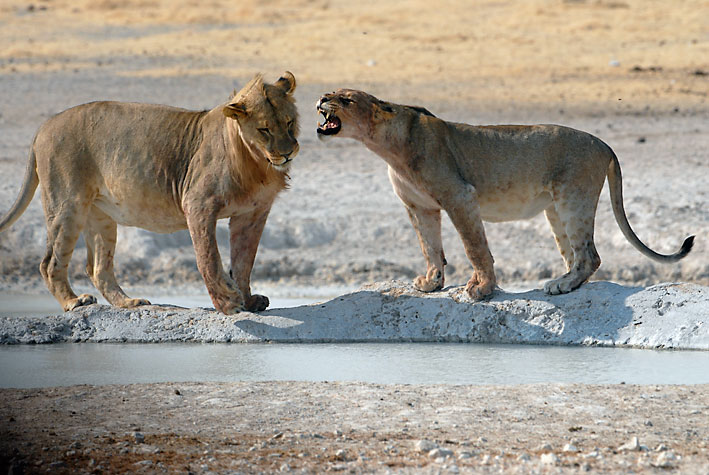 | 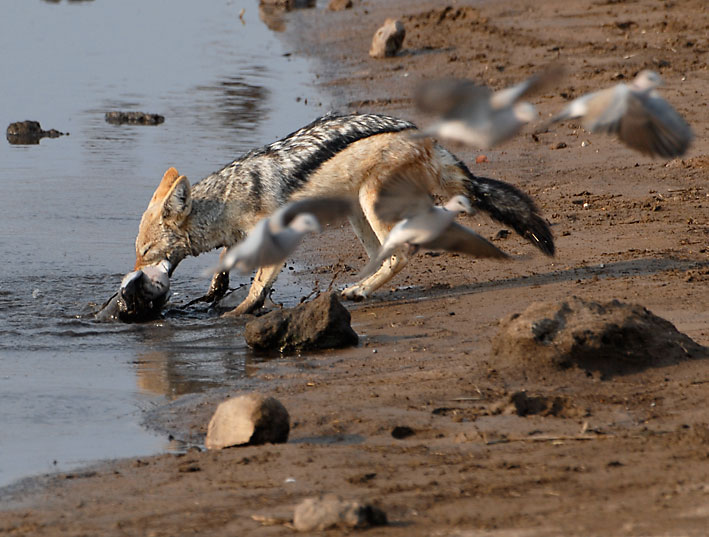 |
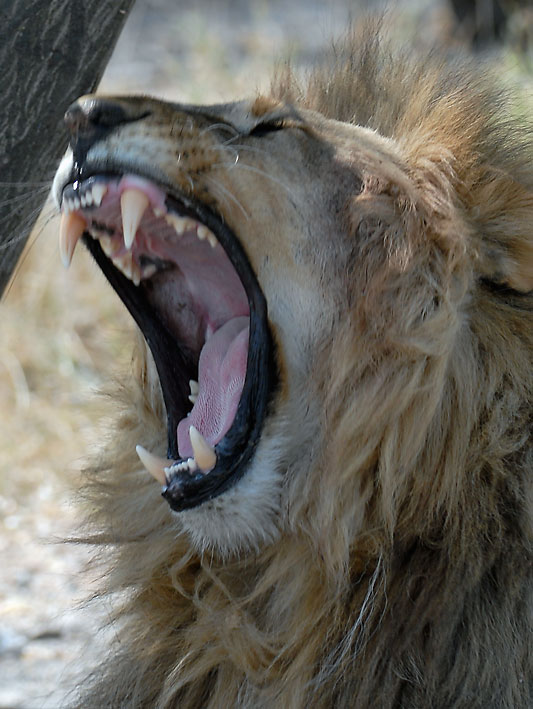 | 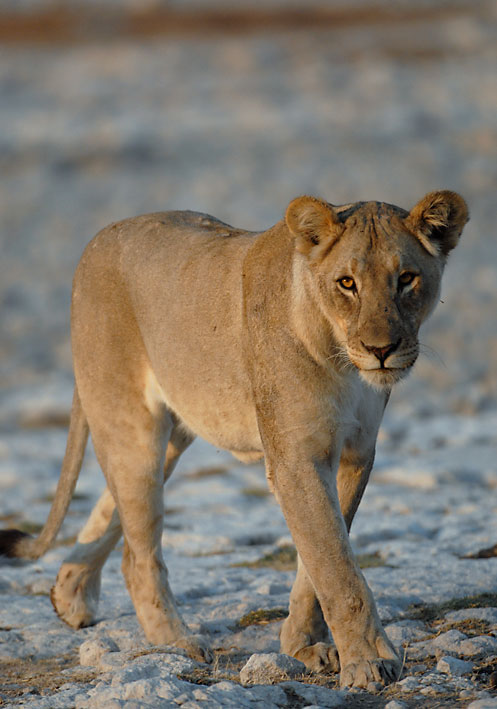 |
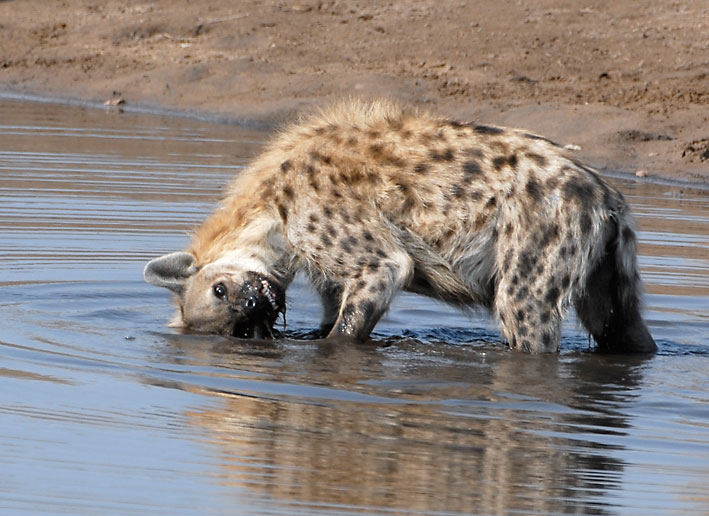 | 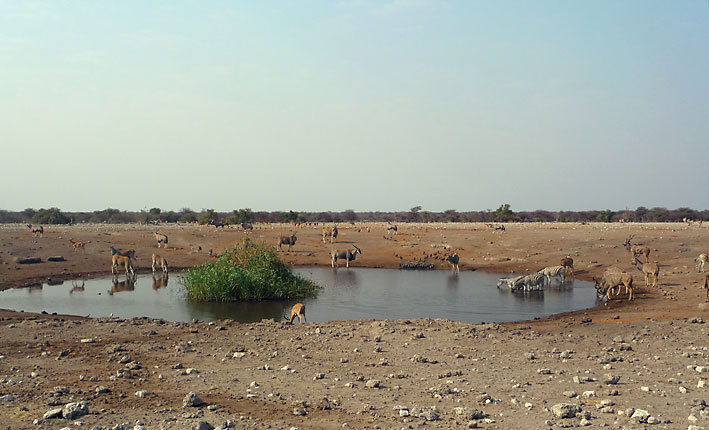 |
2nd September - 5th September 2010 - Okhandja to Vingerklip
We headed north from Windhoek and over-nighted at a farm which has on it's land some impressive dinosaur footprints. It is quite a thing to stand there in the early morning light and imagine the creatures (not unlike Jurasssic Park velociraptors coming over the hill).
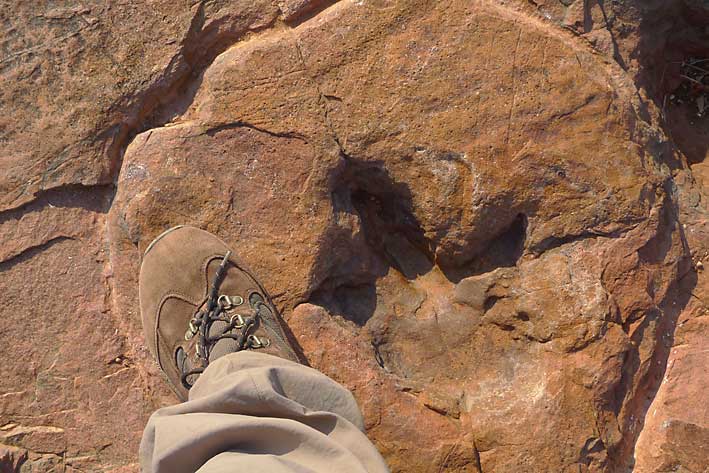 | 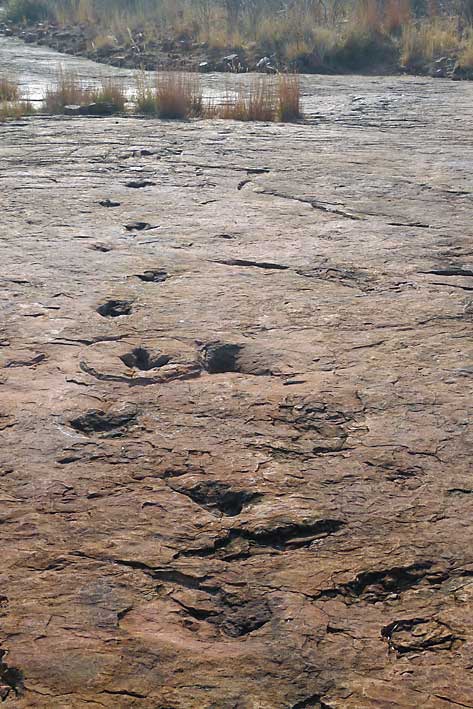 |
Vingerklip is a huge teetering monolith perched in a terrain that wouldn't look out of place in Arizona. It is an impressive landscape - especially at dawn and dusk ... but a steep climb up to the viewing point.
31st August - 1st September 2010 - Windhoek
From Spitzkoppe we were due to travel further into Damaraland. Our next stop was to be Brandberg to see rock paintings and, with luck, the desert elephants. But it was not to be. When we pulled into the campsite we saw there was a leak from the fuel tank. After tracking down a good mechanic in Windhoek we set off, eventually arriving about 20km out of town in the dark.
By this time we were losing about 2 litres an hour and Jerry had to rig up a series of funnels and receptacles to try and catch what we could. The next day was spent at a garage getting the tank welded. Hopefully all is now fixed. This is now our third fuel tank ...
28th August - 29th August 2010 - Spitzkoppe
Spitzkoppe is a small mountain which sits in it's own national park on the edge of Damaraland. The skyline and some of the rock formations in the park are iconic Namibian images. We stayed in the community campsite which consists of various sites set amongst the boulders at the foot of the mountain and at first light climbed up into the rocks to watch the sunrise.
It was beautiful but very windy. On our first morning we got out of our roof tent and a gust caught it and closed it, the ladder flying off into the air.
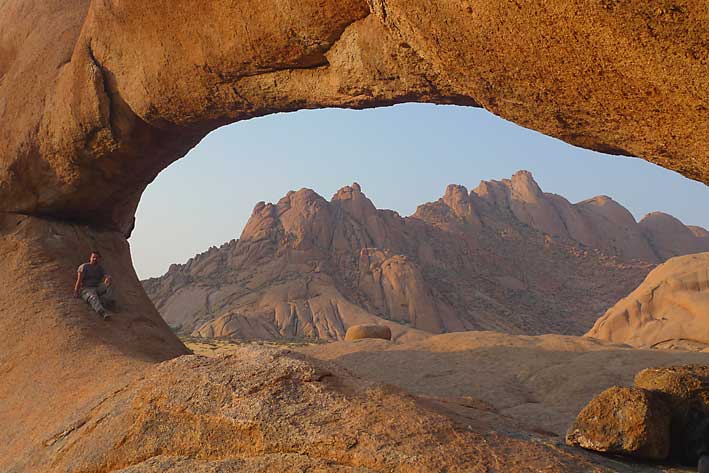 | 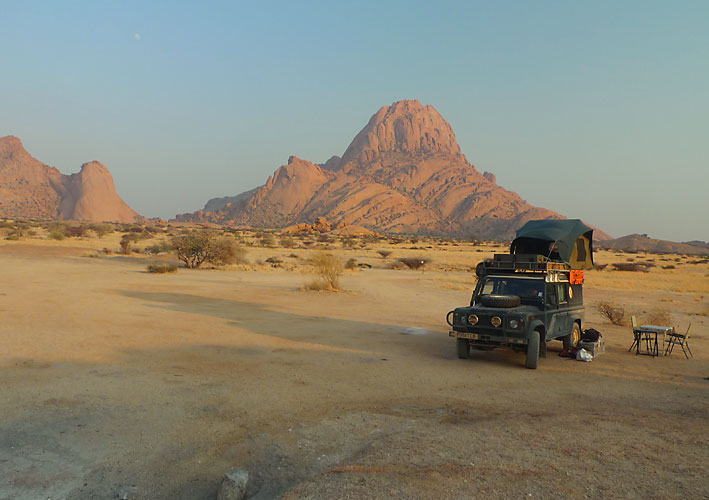 |
25th August - 27th August 2010 - Swakopmund
Time for a few home comforts. Swakopmund was busy but we eventually found somewhere to stay that had wi-fi, TV and laundry and made the most of it.
We did however make time to take in a desert tour. We saw chameleons, lizards, snakes and spiders and a tiny translucent gecko who has to stay buried under 30cm of sand as he has no pigment in his skin. It was fascinating to see how these creatures had adapted to life in such an inhospitable location. Average annual rainfall here is about 15mm and some years there is none.
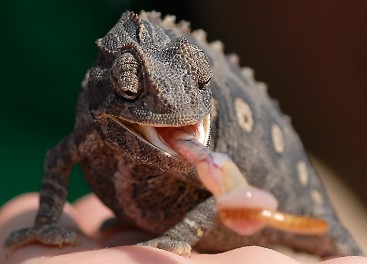 | 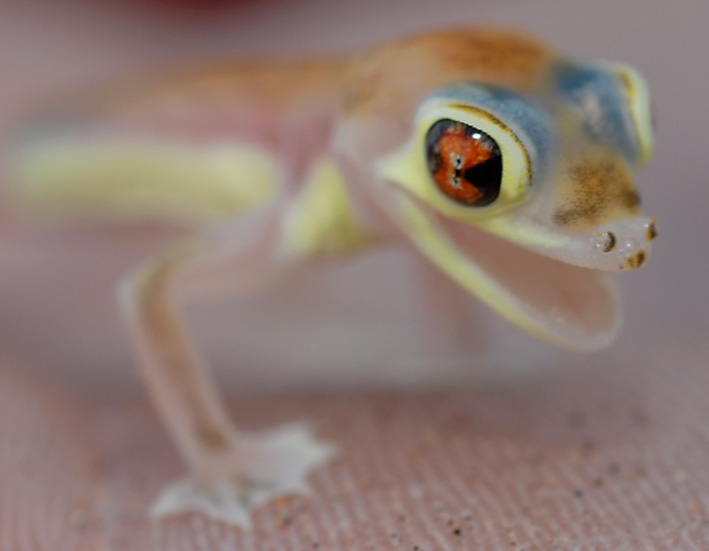 |
23rd August - 24th August 2010 - Sossusvlei
We were undecided whether to visit Sossusvlei again. It is beautiful but it is also, as they say here, a mission. Camping nearby is oversubscribed and very expensive ( as much as £60 per night for two). But we thought on balance it was stupid to drive past a natural wonder and I'm glad we visited. We skipped the dawn drive which is usually very busy and went out for sunset. There seemed to be a bit of confusion about gate times. The lady who sold us the permit said we had to be out by 17.30 pm. The guard on the gate said 18.30pm. But when we, and lots of other cars arrived back a few minutes before then he claimed we were "very late".
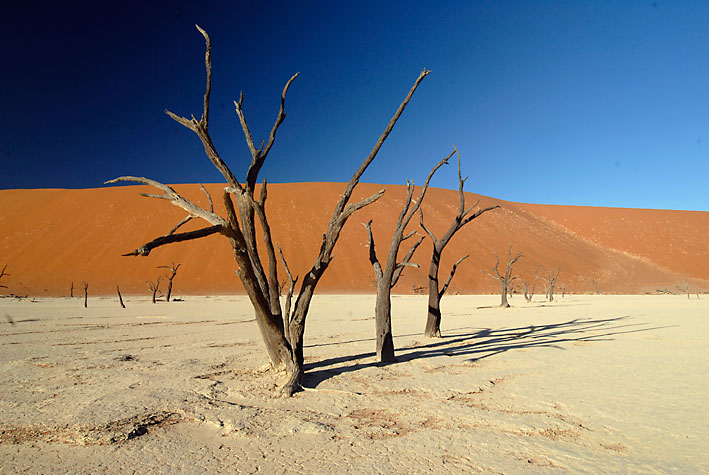 | 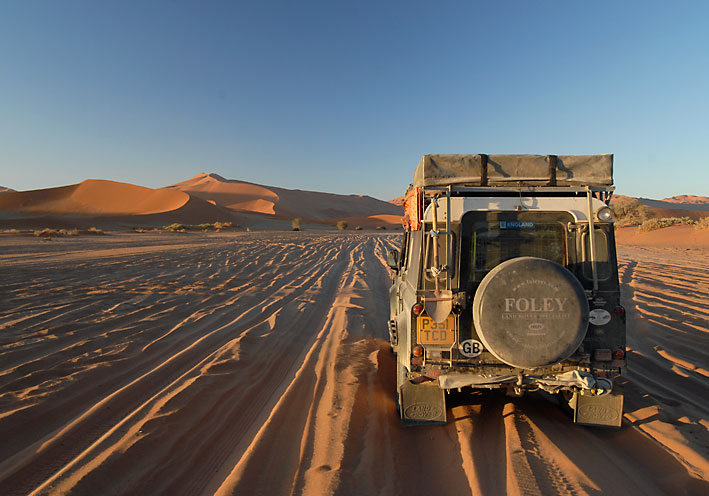 |
20th August - 22nd August 2010 - Tiras Conservancy
We had a great few days here staying at Ranch Koiimasis. The campsite is amazing with stands set up amongst giant boulders and it was a lovely and peaceful place to kick back for a few days (or at least it was until the party of South Africans with the generator arrived ...). We went on a walk around the farm and watched the sunset over the most beautiful landscape.
When we left we took some farm produce with us - ostrich and oryx fillets.
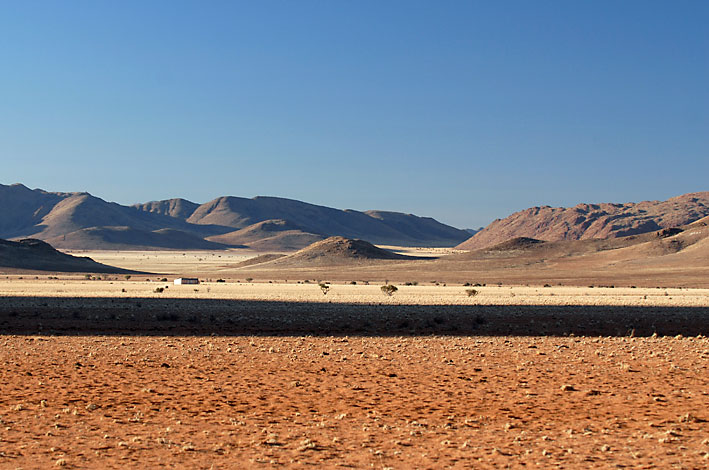 | 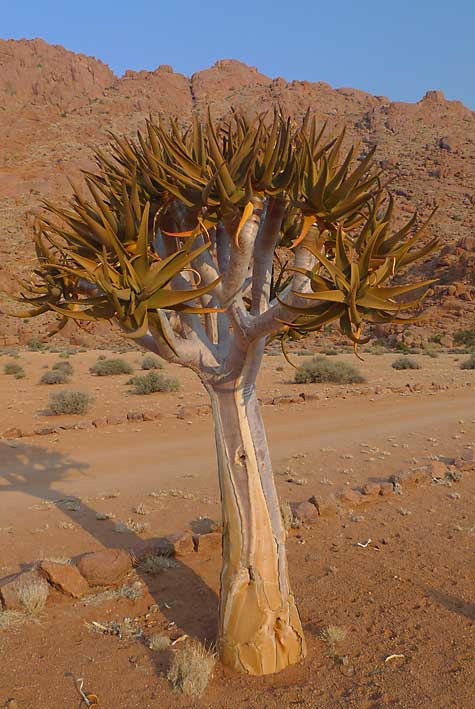 |
18th August - 19th August 2010 - Fish River Canyon
This was a long drive for what was in essence an overnight stop but it exceeded our expectations. We stayed at the Horse Shoe Camp, which is usually only used for accommodation on guided trails and was therefore completely deserted when we turned up. It has an incredible location literally perched on the edge of the canyon.
The next day we explored further and ran into the Charley Boreman/Ross Noble motorbike expedition.
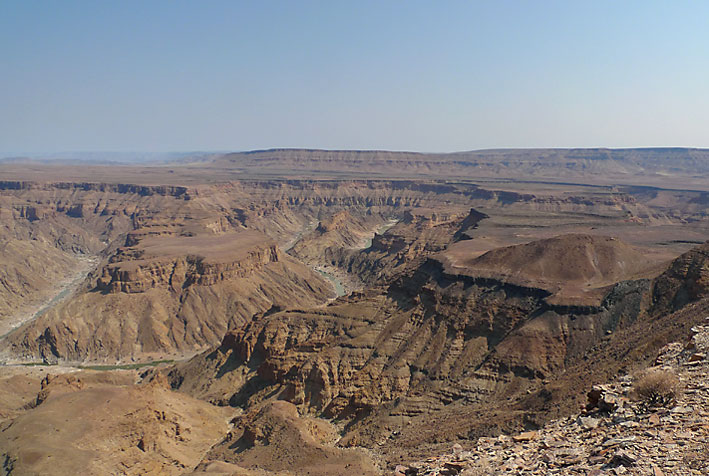 | 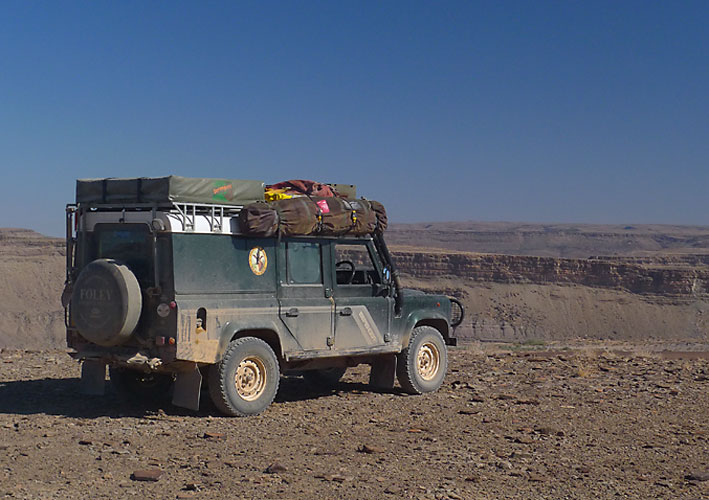 |
14th August - 18th August 2010 - Aus & Luderitz
After a painless border crossing we overnighted on the banks of the Orange River and early the next morning set off for a spectacular drive through the Ais-Ais National Park. As we exited we picked up a passenger; a lady, who, resplendent in her Sunday best, had patiently been waiting for a lift to her church 20km away. We were the first car past.
At Aus we settled into a great campsite and enjoyed the scenery. We visited a local POW campdating back to WW1, still with many odd artefacts dotted arond in the undergrowth and also went in search of the famous wild desert horses. I had the impression that these might be a) hard to spot and b) wary of cars/humans. Neither turned out to be the case. The horses stood in the road to block the cars and get a quick nibble of bodywork/wipers. When we got to the hide overlooking the waterhole we found it full ... of horses. Someone had left the door ajar and it was the only shade around.
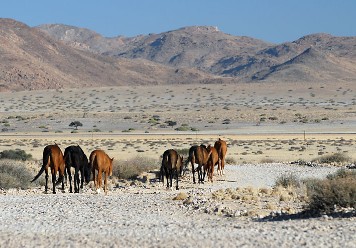 | 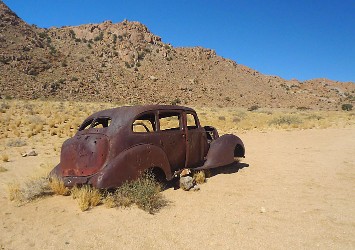 |
We went for an overnight trip to the nearby town of Luderitz which has a well-deserved reputation for being ridiculously windy. We drove around the headland (gusty!) sampling the local oysters en route and had a fascinating trip to a nearby "qhost town", Kolmanskop, a diamond mining town abandoned in the 1950's and slowly being reclaimed by the desert. The town was, for obvious reasons, disproportionately wealthy having electricity, air con and a little railway to transport the ladies who lunched to each others houses, as well as daily deliveries of ice, water and homemade soda. Fresh water had to be imported by sea from Cape Town and cost more per litre than champagne.
 | 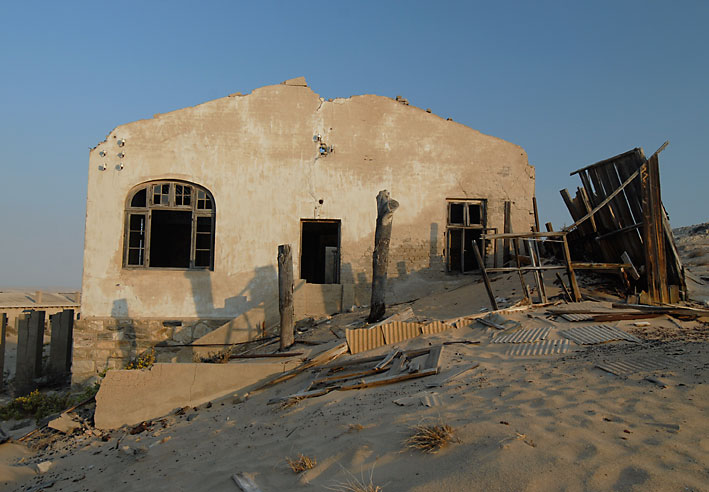 |
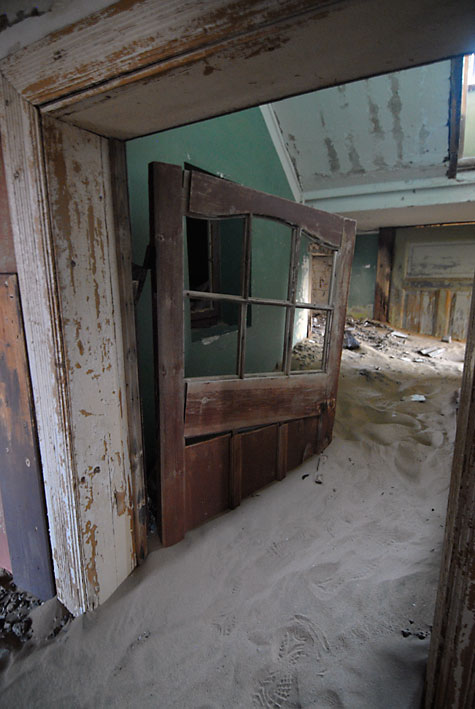 | 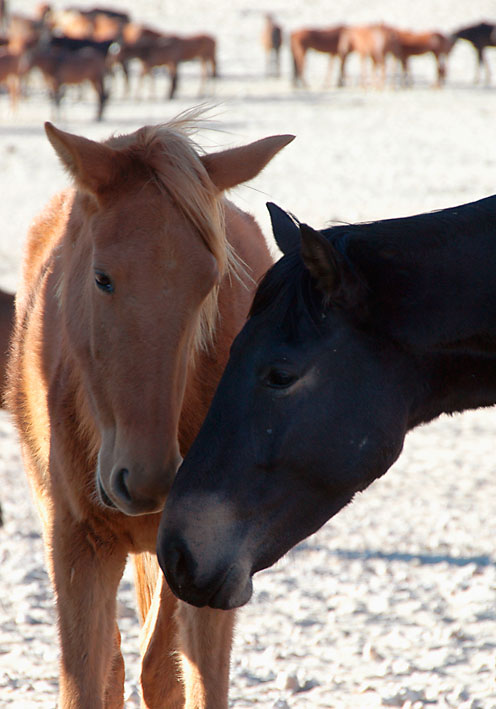 |